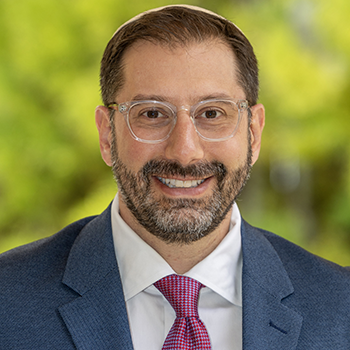
In the early years of the Zionist Movement, there was one common goal: to establish a State. The aspiration was to become a sovereign political entity in some area of our ancestral homeland, but there were multiple approaches to this goal. Theodor Herzl (1897-1904) felt it was necessary to receive a mandate from world powers, while Ahad Ha'am (1856-1927) believed strongly that creating a Jewish society first would later lead to political statehood. There were Labor Zionists, Revisionists, Socialists, Religious Zionists, Cultural Zionists, and many more subtle yet distinct divisions among Zionists.
The State of Israel was born of different ideological camps, each with its own aspiration. Some saw it as an opportunity to fulfill messianic dreams leading towards our redemption, others as an attempt to create an exemplary society, "a light unto the nations." And many viewed the Jewish State as our way to be a nation like all other nations, seeking a "normal" existence. David Ben Gurion, Israel's first Prime Minister, famously said, "We will know we have become a normal country when Jewish thieves and Jewish prostitutes conduct their business in Hebrew."
Israel's Declaration of Independence clearly states that "it is the natural right of the Jewish people to be masters of their own fate, like all other nations, in their own sovereign State," and echoed modern universalist values declaring that:
"THE STATE OF ISRAEL … will foster the development of the country for the benefit of all its inhabitants; it will be based on freedom, justice and peace as envisaged by the prophets of Israel; it will ensure complete equality of social and political rights to all its inhabitants irrespective of religion, race or sex; it will guarantee freedom of religion, conscience, language, education, and culture;"
Israel's national anthem HaTikvah states the simplest definition of the Zionist dream: lihiyot am chofshi b'artzeinu, eretz tzion v'Yerushalayim: "To be a Free People in Our Land, the Land of Zion and Jerusalem."
After 75 years of having a Jewish State, we find ourselves amidst an unprecedented and deeply divisive crisis. On the surface, this crisis is about Israel's future as a democratic Jewish state, dealing with issues such as separation of powers among the branches of government, how judges are appointed, the roles of religion and state, and the lack of an Israeli constitution. On a deeper level, this crisis is about profound differences in Israeli society. It is about the future of the West Bank/Judea and Samaria and public observance of Jewish law. It is about how non-Jews are treated and the preservation of human and civil rights. This is about the relationship between Israel and the rest of the Jewish world.
Amidst this crisis, we need a way forward, and the penultimate line of HaTikvah can help. This line can be broken down into four essential parts:Lihiyot | Am | Chofshi | B'Artzeinu - To be | a People | Free | In Our Land.
This Four HaTikvah Questions (4HQ) frame suggests four interlocking questions that are a way to listen to Israel conversations, and a way to think clearly about Israel's issues, leading to deeper and far more constructive conversations around Israel and around the larger Jewish experience.
When you listen to a riveting sermon or fiery political speech, read an article in the paper or overhear a heated debate at the next table over, when the latest headline screams across the Washington Post or New York Times, see which of the 4HQ it addresses:
Is it about an existential threat? (Lihiyot - To be)
Is it about being Jewish? (Am- a People)
Is it about democracy? (Chofshi - Free)
The land? (B'Artzeinu - In Our Land)
On the occasion of Israel's 75th year of independence, we express our gratitude that the modern State of Israel allows us to answer all four primary questions with a resounding "Yes!" Do we exist? Are we a living, breathing People? Do we rule ourselves democratically in the Land of Israel? Yom HaAtzma-ut is the day to celebrate these fundamental facts.
The frame of the 4HQ offers clarity and affirmation to the wonder of the State of Israel, while at the same time offering a shared conceptual space to address key questions of Jewish existence that take on Jewish peoplehood and the centrality of Israel. Gone are the days in which a single set of answers will enliven the Jewish People as a whole. But a single set of questions which all must continue to answer - each in their own way - is a way to connect while bridging our differences.
The URJ has partnered with Israeli artist and educator Robbie Gringras to produce a curriculum based on the 4HQ which is available to all Reform institutions.
As we celebrate the miracle that is the modern State of Israel, we take this opportunity to embark on a new exploration of Zionism's past, forging the future of Zionism, Jewish peoplehood, and the State of Israel together.
Chag Yom HaAtzma-ut Sameach - Happy Israeli Independence Day!
Related Posts

Marking this Moment: Resources for the Release of the Hostages

I’m a Rabbi. Here is Why my Faith Tells Me the War in Gaza Must End.


